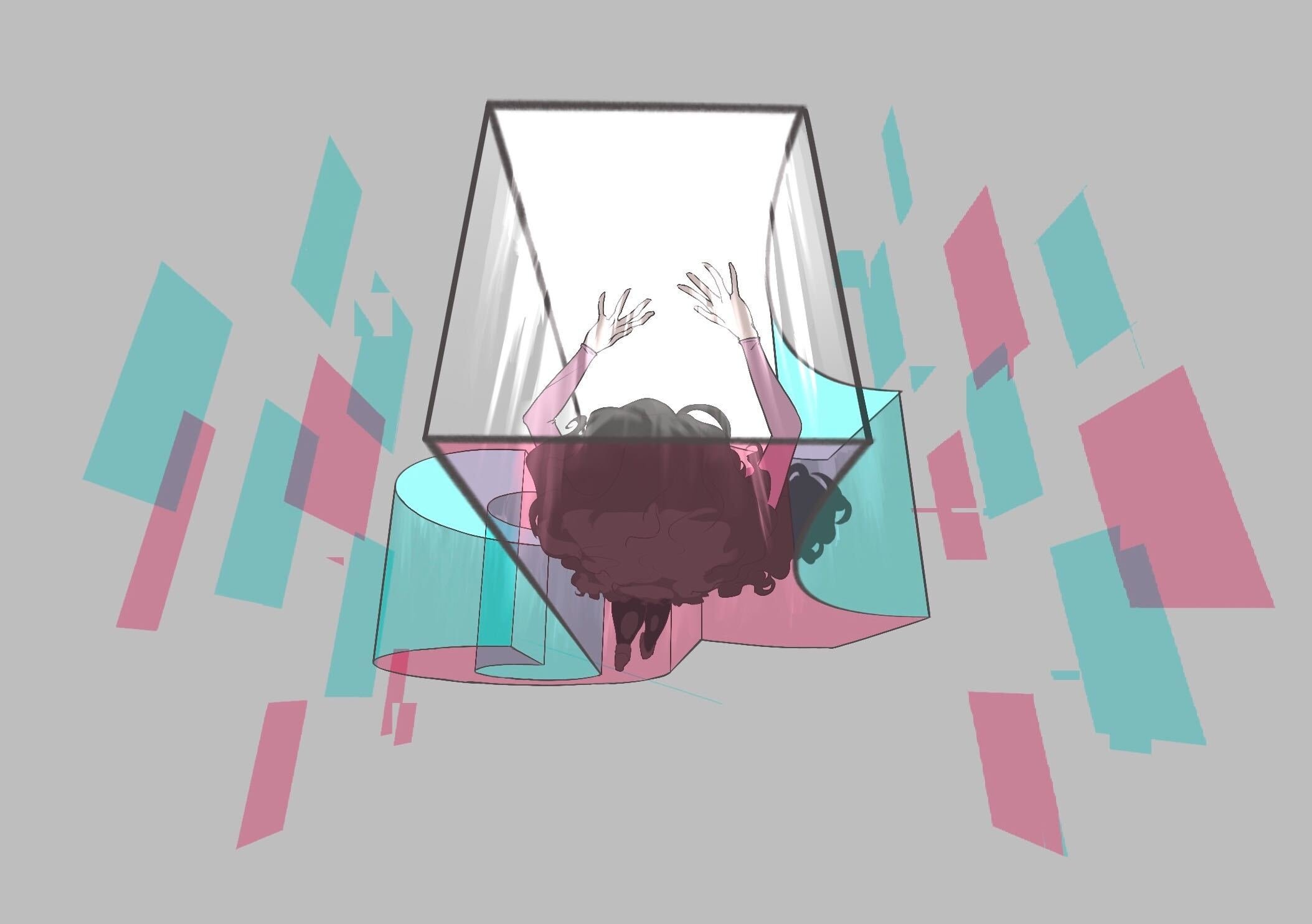TikTok and Its Effects on Teen Mental Health
Art by Kalie Yang
Trigger Warning: This post contains content related to eating disorders and self-harm.
One of the fastest-growing social media video platforms today, TikTok dominates youth culture and attracts over a billion users worldwide, nearly half of whom are 10 years old and older. TikTok recently surpassed Instagram as the most-used social media app among kids ages 12-17, with 63% using the app weekly. As TikTok becomes more accepted by young people, there is growing concern among parents, policymakers and doctors about the actual impact of TikTok on young people's mental health.
Consumption of mental health content on TikTok
A new group of social media stars are rising on TikTok: mental health influencer. Most of them are teenage girls and young women posting videos of themselves experiencing symptoms such as Tourette's Tic and rapid personality changes from borderline personality disorder. Others, often without medical credentials, post videos that help viewers "self-diagnose" their mental illness.
These videos have been viewed billions of times. On TikTok alone, the #BPD (borderline personality disorder) hashtag has 3.7 billion views, #bipolar disorder has 2 billion views, and #DID (dissociative identity disorder) has another 1.5 billion views. Recently, psychologists have noticed a surge in adolescent girls claiming to have Tourette syndrome and other rare mental illnesses such as borderline personality disorder, bipolar disorder and schizophrenia. And common traits of these illnesses have been identified in many girls with these symptoms.
Teens are self-diagnosing mental health issues
Mental health awareness is undoubtedly good, but well-intentioned influencers are inadvertently hurting impressionable young viewers. Many seem to misdiagnose themselves as a disorder or show symptoms suddenly. According to the latest available data, rates of depression among teenage girls doubled between 2009 and 2019, and hospitalizations for self-harm among girls aged 10 to 14 increased by 2010. increased by 100% during the rise of social media in 2014. The rise in mental health combined with the prevalence of smartphones has created a terrifying epidemic in its own right.
Eating disorders and self-harm content on TikTok
According to a report by the Center for Countering Digital Hate (CCDH), TikTok pushes harmful eating disorders and self-harm content onto teens every 39 seconds. Harmful content includes information about eating disorders, self-harm, and sexual assault.
The study found that TikTok displayed teen body images and mental health content every 39 seconds. A new TikTok account in the study recommended content related to self-harm and eating disorders within minutes of scrolling through the app's "For You" feed. The study found that some content advocating eating disorders circumvent moderation using coded hashtags.
It was also revealed that TikTok was targeting vulnerable teens with more harmful content than other teens. In fact, a teen described as vulnerable, saw three times more malicious videos than a standard teen account and 12 times more self-harm than a standard teen account. A video of the act was shown. Ongoing research has found a steady increase in eating disorders among young women and girls aged 15 to 24 over the past 50 years. Suicide is now the second leading cause of death between the ages of 15 and 24 in the United States. About 20% of teens in America reported having considered suicide.
Advice for teens
A couple of strategies teens can use if their feeds are flooded with negative posts is to try and reset the algorithm by changing the types of videos they watch, like and comment on. Watching positive posts can help displace the negative content. They can even delete their accounts and start from scratch.
Resources
Resources If you or someone you know needs immediate help, call one of the following numbers: 9-1-1: Call 9-1-1 if you are having a medical emergency. Available 24 hours a day.
1-800-SUICIDE: Call 1-800-784-2433 if you are having a crisis or are concerned about someone who may be. Available 24 hours a day.
Helpline for Children: If you are a child or youth and would like to talk to someone call the Helpline for Children at 310-1234 (no area code needed), toll-free anywhere in B.C. to access emotional support, information and resources specific to mental health and substance use. Available 24 hours a day.
Kid’s Help Phone: Call 1-800-668-6868 to speak to a professional counsellor. Available 24 hours a day.
Youth in BC Distress Line: Call 604-872-3311 or 1-866-872-0113 (toll-free) to speak with counsellors and trained volunteers who are committed to helping youth in crisis. Available 24 hours a day
Information for parents and caregivers on signs and risk factors that may increase the chances of suicidal behaviour.
A resource to help teens cope with anxiety disorders and to educate anyone wanting to learn more about this common type of mental health problem.
The Provincial Youth Concurrent Disorders program provides outpatient psychiatric consultations for B.C. youth (aged 12-24). The clinic offers specialized services for the complex needs of youth with substance use disorders, as well as conditions involving both substance abuse and mental disorders. A referral from a physician is required.
Maples Adolescent Treatment Centre
The Maples is an accredited facility that offers specialized programs and services to address the needs of young people (aged 12 to 17) who have severe mental health concerns or troubling behaviour.
This tool kit, which is designed to help families care for a family member with a mental illness or substance use disorder by provides information and practical resources.

